History of Cherkasy
Early history and foundation of Cherkasy
People lived on the territory of today’s Cherkasy already in the late Paleolithic (about 40-10 thousand years ago). Some artifacts found on the territory of Cherkasy belong to the Mesolithic era (7-10 thousand years ago). In the 4th century AD, on the banks of the Dnieper River, there was a settlement of the Chernyakhov culture here.
During the times of Kyivan Rus, on the territory of the future Cherkasy, there was a Slavic settlement, which was part of the system of defensive fortresses built to protect against nomads. It is confirmed by the discovered archeological finds: weapons, tools, coins of the 10th-12th centuries.
In the middle of the 13th century, the Mongol invasion devastated these lands. The settlement re-emerged on this site at the end of the 13th century. For the first time Cherkasy was mentioned in written documents in the Gustin Chronicle in 1305. It was listed along with such towns as Kyiv, Kaniv, Zhytomyr, and Ovruch.
In the 1360s, a new period began in the history of Cherkasy, associated with the entry of the town, as a part of the Kyiv Principality, into the Grand Duchy of Lithuania. In 1384, Cherkasy was mentioned as a fortified town on the southern outskirts of the country, forming, together with Vinnytsia, Bratslav and Kaniv, a line of defense on the way of the Crimean Tatars.
More Historical Facts…
Cherkasy in the 15th-18th centuries
The role of Cherkasy, as an important stronghold against attacks from the Crimean Khanate, especially increased from the end of the 15th century. In 1483, the Crimean Khan Mengli I Giray, devastated almost the entire Kyiv region, but did not take Cherkasy. At the beginning of the 16th century, the Cherkasy fortress was significantly fortified. In 1532, it withstood a 30-day siege by the troops of the Crimean Khan Saadet I Giray.
During this period, Cherkasy became one of the centers of the formation of a new social group of people - the Cossacks. After the Union of Lublin of 1569, Cherkasy became part of the Crown of the Kingdom of Poland. From the name of the town, around which the Cossacks settled, they generally began to be called Cherkassians. In Moscow documents of the 16th-17th centuries, all Ukrainians were called Cherkassians.
The Cherkasy regiment, formed in 1625, occupies a special place in the history of the city. It became one of the most numerous and participated in all important battles of the Cossack army of Bohdan Khmelnytsky (the Cossack-Polish War of 1648-1657).
Almost from the beginning of the uprising, Khmelnytsky had diplomatic ties with Moscow, but Tsar Alexei Mikhailovich avoided supporting the uprising, since this would mean a war between Moscow and the Commonwealth. However, the defeat of Poland in Ukraine and the threat that Khmelnytsky would recognize the supremacy of the Ottoman Empire pushed Moscow to new negotiations with the hetman in 1653.
The signing of the agreement was supposed to take place in Cherkasy, but due to the attack of the Poles, the diplomats urgently moved to neighboring Pereyaslav, where the Pereyaslav Council was held in January, 1654. Ukraine recognized the protectorate of the Moscow Tsar, while maintaining its full autonomy and receiving military and political assistance from Moscow against the Commonwealth.
According to the Andrusov Peace Treaty of 1667, which ended the Moscow-Polish War of 1654-1667, Cherkasy remained under the control of the Polish-Lithuanian Commonwealth. In 1793, after the second partition of the Commonwealth, Cherkasy became part of the Russian Empire as a district town of the Kyiv Governorate.
Cherkasy in the 19th - early 20th centuries
At the beginning of the 19th century, the population of Cherkasy was about 4,000 people. In 1815, William Hastie, a Russian architect of Scottish descent, made the first master plan for the development of Cherkasy, according to which the town center received wide, long streets, intersecting at right angles.
In the second half of the 19th century, a number of new industrial enterprises were opened in Cherkasy: a sugar refinery, a sawmill and a mechanical plant, a brewery, and several tobacco factories. Most of the enterprises were located along the Dnieper River, for the convenience of transporting raw materials and finished products.
In 1897, the population of Cherkasy was 29,619 people (Ukrainians - 12,900, Jews - 10,916, Russians - 4,911, Belarusians - 522). In the period of the late 19th - early 20th centuries, new buildings and enterprises were rapidly being constructed. The architecture of Cherkasy became very diverse - various forms and styles (modernized classical, Moorish, Gothic) coexisted with each other here.
As of 1903, Cherkasy had 69 commercial and industrial establishments (including an iron foundry and mechanical plant, a nail plant, 7 sawmills, 8 brick factories, 4 tobacco factories, a sugar refinery, a brewery, as well as 3 steammills, 7 watermills and 31 windmills), which employed 1,800 factory workers; a printing house, 2 libraries, a men’s gymnasium, and a religious school. Cherkasy also had 7 stone and one wooden church, a female schismatic monastery, 6 schismatic and 9 Jewish prayer houses.
In 1912, a railway bridge was built across the Dnieper, which became an integral part of the Odesa-Bakhmach railway. In 1913, the first power plant was put into operation, supplying electricity to industrial facilities and residential buildings in the city. In February 1914, a Russian engineer Vladimir Shukhov built a hyperboloid water tower in Cherkasy (one of the 11 that has survived to this day).
In January 1918, Soviet power was established in the city. Then it was occupied by the advancing Austro-German troops. Later, in the course of the Civil War, Cherkasy repeatedly passed from hand to hand. On December 31, 1919, Red Army units entered the city and Soviet power was restored.
Cherkasy in Soviet and independent Ukraine
In 1932, Cherkasy became a district center of Kyiv Oblast of the Ukrainian Soviet Socialist Republic. In 1939, the population of Cherkasy was about 52 thousand people. The Second World War inflicted tangible damage on the city. The German occupation lasted from August 22, 1941 to December 14, 1943. Almost all industrial enterprises of the city were destroyed. About 5 thousand residents were taken to Germany for forced labor. The restoration of Cherkasy began after the end of the battles for the city and continued in 1946-1950.
In 1954, it received the status of a center of a separate Cherkasy Oblast of the Ukrainian SSR - the youngest administrative region of the country. The leading industries of the regional center were chemical, machine-building, instrument-making, processing and food.
In the 1960s, with the development of the chemical industry, Cherkasy gradually turned from a center of light industry into a chemical giant. In 1961, the largest plant for the production of nitrogen fertilizers in Ukraine was built here. With the construction of the Kremenchug hydroelectric power station and the formation of the Kremenchug reservoir, the longest dam in Ukraine with a bridge up to 15 km long was constructed across the newly created “Cherkasy Sea”. This turned Cherkasy into a significant transport hub.
In 1991, the population of Cherkasy reached its maximum - about 302 thousand people. After Ukraine gained independence, a number of enterprises, including chemical ones, were closed, unable to adapt to the market economy. Cherkasy from the center of the chemical industry turned into the Ukrainian center of the automotive industry. Also, several food and light industry enterprises still operate in the city.
Sights of Cherkasy
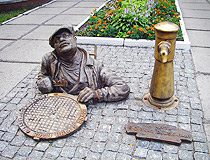
Monument to the Plumber in Cherkasy
Author: Garik Rybalchenko
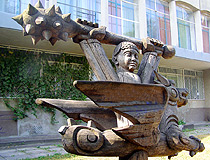
Street sculpture in Cherkasy
Author: Olena Buyevich
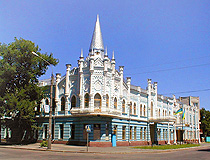
The Blue Palace in Cherkasy
Author: Lyuda Erdman
Cherkasy - Features
Cherkasy is one of the most picturesque cities in Ukraine. It is located about 190 km south-east of Kyiv, on the high right bank of the Kremenchug reservoir, created in the middle reaches of the Dnieper, the main river of Ukraine. The city stretches for 17 km along the coast of the Kremenchug reservoir.
From the north-west and from the north, it is surrounded by a forest - Cherkasy Bor, the largest (28.5 thousand hectares) pine forest of natural origin in Ukraine. The climate in the city is moderately continental with mild winters and warm summers. The average temperature in January is minus 5.9 degrees Celsius, in July - plus 19.8 degrees Celsius.
The origin of the toponym “Cherkasy” and its true etymology remains a mystery to this day. Most researchers suppose that the roots of this name are in the Turkic languages. The simplest and most actively supported by historians version is that it comes from one of the ethnonyms of the Adyghe people (also known as the Circassians or the Cherkess). By ethnic composition, the majority of the city’s population (over 80%) are Ukrainians, Russians make up about 13%. The City Day of Cherkasy is celebrated on the first Sunday of June.
In the upper part of the city’s coat of arms you can see a Cossack with a gun and a saber, in the lower part - a silver horse. The Cossack symbolizes the direct connection of Cherkasy to the formation of the Ukrainian Cossacks. The horse repeats the old coat of arms of Cherkasy adopted in 1852.
Cherkasy is an important economic center of Ukraine, various industries are represented here, but traditionally the most developed ones are the chemical, automotive and food industries. The largest Ukrainian enterprise for the production of nitrogen fertilizers is located here.
A railway runs through the city connecting Kyiv with Kharkiv and Dnipro. It runs along a dam and a bridge over the Kremenchug reservoir. Cherkasy has a river station and a river cargo port. Public transport is represented by trolleybuses and buses.
Cherkasy has several theaters, cinemas, and museums, a regional philharmonic society, 3 indoor ice rinks, parks, public gardens, a zoo, and a planetarium. Sandy beaches on the bank of the Kremenchug reservoir are also a popular recreation place for residents and guests of the city.
In the warm season - from late April to September-October - the Cherkasy river port invites guests of the city and local residents to take a boat ride along the Dnieper. The river cruise usually lasts an hour. Rest on the river can be supplemented with fishing and a picnic on one of the islands.
Main Attractions of Cherkasy
Scherbina’s Mansion (The Wedding Palace) - one of the symbols of Cherkasy, the most luxurious mansion of the 19th century that has survived to our times. It was built in the neo-renaissance style for Afanasy Nikitich Shcherbina, an engineer, entrepreneur and member of the city council, in 1892. Thanks to the modern lighting system, this building looks especially picturesque in the evening. Nebesnoi Sotni Street, 3.
The Blue Palace (the former hotel “Slovyanskyy”) - an incredibly beautiful historical building constructed in the post-romantic Gothic style using elements of Art Nouveau, Classicism and medieval oriental architecture. This architectural monument was built in the early 20th century. At night, when the building is illuminated, it really looks like a fairytale palace. Khreshchatyk Street, 229/20.
Shukhov’s Hyperboloid Water Tower - a unique 34 meters high monument of architecture and urban planning, built in 1913-1914, one of the first hyperboloid structures of the famous Russian engineer Vladimir Shukhov. In total, only about 20 similar structures have been preserved in the world (6 in Ukraine) out of the original more than 200.
During the Second World War, the Germans destroyed the tower. After the war, it was restored. The tower is located on the closed territory of the local water utility enterprise (Cherkasyvodokanal), so most likely you won’t be able to get close to it. However, this will not prevent you from taking photos against its background. Hetmana Sahaidachnoho Street, 12.
The Hill of Glory - a memorial complex built in memory of the residents of Cherkasy who died during the Second World War. It includes a mass grave and a majestic monument to the Motherland. An excellent view of the Kremenchug reservoir (the Dnieper River) opens from the top of this artificial hill. At the foot of the hill there is a small picturesque park called “The Valley of Roses”, where city events and festivals are usually held.
Cherkasy Regional Museum of Local Lore. This museum, located in the immediate vicinity of the Hill of Glory, has one of the most extensive and largest collections of materials on the history, culture and life of the Cherkasy region. The exposition is devoted to the nature of the region, archeology, ethnography, the history of the region of the 14th - early 20th centuries and after 1917. Among the unique exhibits, the leading place is occupied by a collection of things (weapons, flags, personal belongings) from the Cossack times. You can also see a mammoth skeleton here. Slavy Street, 1.
Cherkasy Regional Arts Museum. Decorative and applied art is represented by magnificent examples of Ukrainian traditional embroidery and ceramics. The art section presents icon painting of the 16th - 19th centuries and portrait painting of the 18th - early 20th centuries. The works were created by famous portrait painters from both Ukraine and other countries. Numerous landscape paintings are exhibited here too. Khreshchatyk Street, 259.
St. Michael’s Cathedral - the largest church in Ukraine (72 meters high) located on the territory of one of the biggest parks in Cherkasy (Sobornyy Park). Built in the Byzantine style in 1994-2002, this Orthodox cathedral can accommodate up to 12 thousand people. The highest bell tower in Ukraine (134 meters) in the shape of a dove is also being constructed here. Nadpilna Street, 212.
The Buddhist Temple “White Lotus” - a unique place for Ukraine, one of the largest Buddhist temples in Europe. Built in the 1990s, it looks similar to Buddhist temples in Laos. Here you can attend a tea ceremony, master classes in yoga, kung fu, meditation, and calligraphy. Guided tours take place every Sunday. Franka Descent, 4.
Cherkasy Zoo - one of the best zoos in Ukraine with over 250 species of animals. It is located in the southwestern part of Cherkasy on an area of 4 hectares. Here you can see such animals as llama, bison, lion, bear, bactrian camel, wolf, lynx, and a lot of others. Smilyanska Street, 132.
Park “Sosnovy Bor” (“Pine Forest”) - the largest park in Cherkasy with ponds, streams, lawns, alleys, and exotic plant species. A monument of gardening art of Ukraine of national importance, it is located in the northwestern part of the city on the bank of the Kremenchug reservoir on an area of 39.2 hectares. You can feed squirrels here. The central entrance is at the intersection of Shevchenko Boulevard and Mozhaiskoho Street.


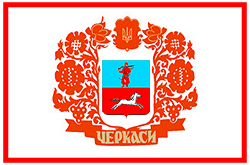
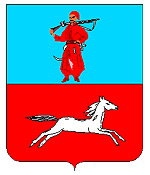



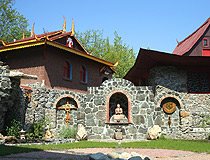
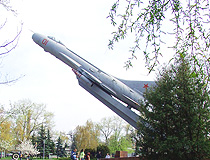
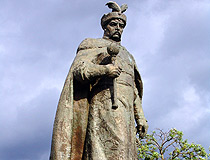
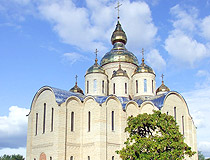
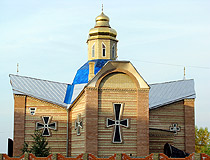
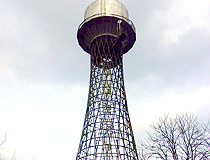
The comments of our visitors